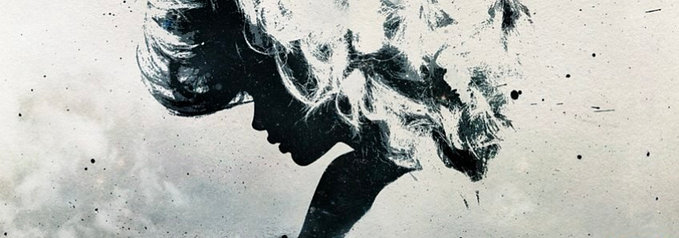Why And How To Invite Your Demons To a Tea Party?
The Guest House

We are often told that we fail to see that what we seek outside of ourselves is already within us. And according to a quote by Brian Tracy, “You have within you, right now, everything you need to deal with whatever the world can throw at you.” We can’t control our circumstances, but we can always control our emotions and feelings including the scary ones. Our mind is our heaven as well as hell. Mind can become our garden (of Eden) if we sow the seeds of positive thoughts, beliefs and feelings, but if we stop tending this garden for a long time, it can become a scary place full of demons, ghouls, and trolls etc. These figures are often so terrifying that we resist going down into the basement of our minds to know what lurks there.
So, who’s been visiting you lately and why? Do you know? Do you tend to reject your own negative feelings and emotions? If so, why do you think that’s so?
According to psychologists, our inner demons are the thoughts, feelings and beliefs we feel cause us the most pain, that we obsess about and dwell on, that we feel haunted, consumed and tortured by.
Buddhism explains these overwhelmingly negative feelings or thoughts as a label for “inner poisons” — hate, clinging, pride, jealousy, or ignorance etc.
However, we mostly try to drown them by using the conventional and vapid tactics, such as using drugs of choice to try and drown them out; trying desperately to ignore them; trying to battle them in our minds; constantly trying to defend ourselves and disprove them and so on and so forth. However, the more we fight them, the more resistance we create, and the more negative energy accumulates in our bodies, making it even harder for us to find the internal stillness and quiet we need in order to heal.
So what needs to be done? What is the best strategy to get rid of , or at least, control or keep these demons in check?
It is important to know that when it feels like a storm is brewing inside you — a potent mix of anxiety, jealousy, anger, and other difficult emotions — you might be inclined to turn away. But that rarely makes them dissipate, so you might as well invite them in and get to know them better. It makes sense that you might not want to invite in distressing thoughts and emotions. But when they are already in, avoiding them doesn’t seem to do anything except to cause them to roar all the more. Demons are part of who we are: anger, hate, disappointment, sorrow, malice, jealousy etc. Nearly everyone have them and one can’t make them disappear just by wishing. Sometimes these demons turn on ourselves and we are then faced with self limiting beliefs that for some can be crippling to our mental and spiritual growth.
Thus the best solution is to invite them to a tea party and offer them cake and other sweets and in return you might receive something from them for your understanding and kindness. Something you can only receive for having the courage to face your darkness. Thus being friendly with our demons rather than fighting them (although it contradicts the conventional approach of fighting against whatever assails us) is remarkably effective path to inner integration.

Buddhism also rejects the idea of complete self-denial and offers a solution based on the need to face our most horrible demons and accepting them as they are. There is a story about Buddha welcoming the Mara (The Demon or Tempter) that explains this approach very succinctly. There are several versions of this story; some fairly straightforward, some elaborate, some phantasmagorical. Here is a simple version:
Once Buddha, Siddhartha Gautama, The Exalted One, came to Bodh-Gaya and meditated under a tree. The tree was in the center of the world, the axis mundi (immovable spot). The spot was immovable spot because the Exalted One was about to enter the realm without fear and desire, a realm that transcends time and space, a realm where“I”, the ego, no longer exists. When Mara recognized that Siddhartha was on the verge of transcending his domain — the realm of fear and desire — the samsara, he took immediate action to prevent this kind of nonsense from happening.
He brought his three beautiful daughters (Tanha-craving, Arati-aversion and Raga-passion) to seduce Siddhartha. The Exalted One, without desire, remained in meditation. Mara himself appeared before Siddhartha as a Chakravartin (world ruler), mounted on his elephant, Girimekhala, accompanied by a large army including monstrous demons wielding powerful and deadly weapons. They attacked Siddhartha. The Exalted One, without fear, sat still and unharmed.
Mara claimed that according to the Dharma the seat of enlightenment belongs to the greatest and only the greatest. Mara’s soldiers cried out, “Mara is the Chakravartin/world ruler. He is the greatest. I am his witness!”. Mara challenged the Exalted One. Then and there the Exalted One reached out his right hand to touch the earth in what is called the Bhumisparsha mudra, and Mae Thorani appeared. The water (representing the good merit accumulated by Buddha) she wrung from her hair caused a flood that drowned Mara’s army. The earth-mother herself spoke: “Bless him/her who sits on the axis mundi, for one can only transcend time and space if one is immovable.”
Mara tried to push and pull Siddhartha away from the immovable spot but there was no-body there. He went ahead and sat on the spot but some-body was there. Mara was perplexed. Mae Thorani explained: “This is Sakyamuni, my beloved son, who through his five-hundred incarnations has so given himself that there is no more “I”. This is Tathagata — a Buddha who is going and is coming. This is Sunyata — form is empty and empty is form. This is Heaven — the world of non-duality. This is Nirvana — the extinction of fear and This is Eternal Bliss.”
And as morning star rose in the sky on the new day, Siddhartha Gautama realized satori (sudden enlightenment) and achieved illumination. He became Buddha — the Enlightened One.
According to some pundits, an important postscript to this story is that the last time the Buddha encountered Mara was not on the morning of his awakening. In fact, contrary to the idea that we “conquer our demons” and leave them behind, Mara continued to show up unexpectedly throughout the Buddha’s life. When this would happen, the Buddha did not ignore Mara or try to get rid of him, but rather, he would turn toward him and say, “I see you, Mara”. He would then invite Mara to tea and, without disturbance, the Buddha would sit with Mara while he had his visit and then went on his way.
In the version of Joseph Campbell (an American writer who was a professor of literature at Sarah Lawrence College and also worked in comparative mythology and comparative religion), the immovable spot or axis mundi is not a geographical place, but a state of mind. It is that place in the psyche that is not moved by desire and fear.
When we are confronted with painful conditions, our habit energies, such as anger/hatred, anxiety/fear, shame or doubt, can unfold automatically. The pertinent question is that should we avoid or ignore them? Should we try to get rid of them? Should we go after them in an effort to feed and satisfy the habit energies? Or, as a radical alternative, might we invite them (or Mara) to tea? Campbell gave an excellent rhetorical answer: “How in heaven’s name are you going to find your own track if you are always doing what society tells you your duty is?” Or should we always react according to our habitual way of reacting?
If we decide to choose a radical alternative like Buddha then we should invite them to a tea. When they take their seats at the table, baring their teeth and roaring, pour tea into the cups and treat them with snacks including biscuits or cookies. Look at them with curiosity and start chatting with a soft smile on your face. Suddenly you will notice that they are beginning to fade and shrink.
Thus as another pundit suggests, “… with regular practice, it is possible to grow our capacity to pause and slow down the pace at which these energies move and grow. With this slowing, comes the ability to witness and label what is happening…”I see you, Mara”…”I see you, fear/anger/greed/doubt”. Once we identify and acknowledge Mara’s presence, we can choose to invite him to tea…to sit with him…sit with discomfort…work to stay grounded, steady, and present in Mara’s midst.
Kindly Support
I am not eligible for “Medium Partner Program” and constantly devoting my time and energies to produce meaningful content for my readers. Thus I need support from the generous literature lovers like you and this can be done by just clicking the link given below to buy me a coffee:
References:









